Understanding De-dollarization: Is the Global Financial System Shifting?
The U.S. dollar has long held an unparalleled position in the global financial landscape. For decades, it has been the primary reserve currency, the bedrock of international trade, and the anchor for countless financial transactions around the world. Its dominance has shaped markets, influenced geopolitics, and provided significant advantages to the United States.
However, in recent years, a growing narrative has emerged about “de-dollarization.” This isn’t just academic chatter; it’s a tangible trend driven by complex geopolitical shifts, evolving economic priorities, and the strategic decisions of nations seeking greater economic sovereignty. As an investor or trader, understanding this potential shift is crucial. It could impact currency values, commodity prices, capital flows, and ultimately, the performance of your portfolio. So, let’s embark on a journey to dissect this fascinating and potentially transformative trend.
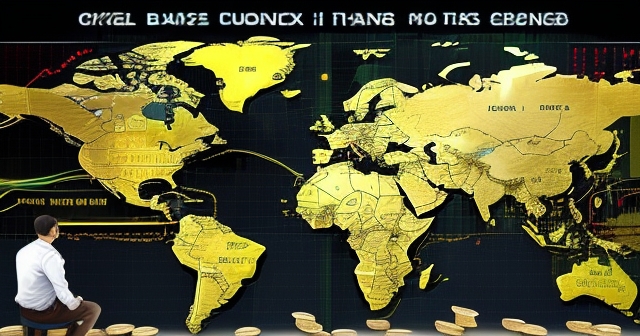
What Exactly is De-dollarization? Defining a Complex Trend
At its core, de-dollarization refers to a significant reduction in the use of the U.S. dollar (USD) in various aspects of the global economy. Think of it as a gradual moving away from the greenback’s central role. It implies a decrease in demand for the dollar from countries, institutions, and corporations alike.
This trend manifests in several ways:
- Less Use in International Trade: More transactions for goods and services between countries are settled in currencies other than the USD.
- Lower Share in FX Reserves: Central banks around the world hold a smaller percentage of their foreign exchange reserves in U.S. dollar assets (like Treasury bonds).
- Development of Alternative Systems: New payment systems and financial architectures are being created that bypass traditional U.S.-centric infrastructure.
- Increased Use of Alternatives: A rise in the adoption of other currencies or assets (like gold) for international transactions and as stores of value.
To better grasp the landscape of de-dollarization, here are some key statistics:
| Statistic | Value |
|---|---|
| U.S. Dollar Share in Global Reserves | About 60% |
| Increase in Use of Euros in FX Reserves | Over 20% |
| Total Global Gold Holdings (in Tonnes) | Over 35,000 tonnes |
It’s important to understand that de-dollarization doesn’t necessarily mean the complete abandonment of the dollar overnight. Rather, it’s a process of diversification and a gradual chipping away at its overwhelming dominance. To grasp its significance, we first need to appreciate how the dollar achieved its current status.
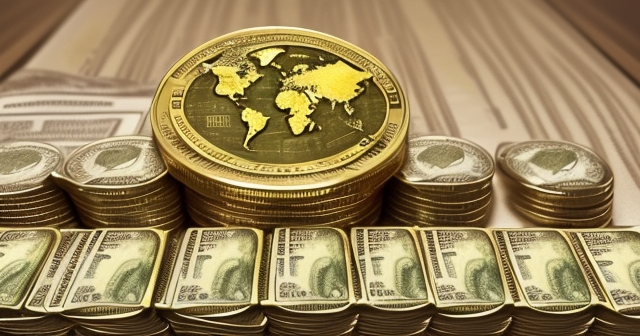
The Ascent of the Greenback: A Brief History of Dollar Dominance
The U story as the world’s primary reserve currency isn’t a tale of instant success, but rather a gradual ascent cemented by key historical moments. Before World War I, the British Pound Sterling held sway. The World Wars, however, dramatically altered the global economic landscape, weakening European powers and propelling the United States forward.
The pivotal moment arrived in 1944 with the Bretton Woods Agreement. This accord established a system where other currencies were pegged to the U.S. dollar, and the dollar itself was convertible into gold at a fixed price ($35 per ounce). This structure effectively crowned the dollar as the world’s primary reserve currency, backed by the economic might and gold reserves of the United States.
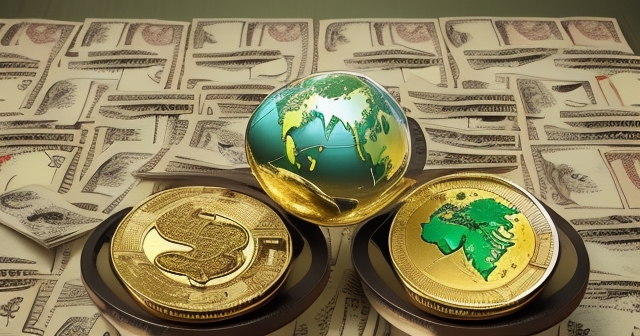
Even after President Nixon ended the direct convertibility of the dollar to gold in 1971, the dollar’s role persisted. Several factors ensured its continued dominance:
- Size and Stability of the US Economy: The sheer scale and relative stability of the US economy provided confidence.
- Deep and Liquid Capital Markets: US Treasury markets and corporate bond markets offered unparalleled liquidity and safety for investing reserve assets.
- Rule of Law and Institutional Trust: The perceived strength of U.S. legal and financial institutions fostered trust among international investors and central banks.
- The Petrodollar System: Agreements in the 1970s led to major oil-producing nations pricing their oil in dollars, requiring countries buying oil to hold and use dollars, further embedding its use in global trade.
- Geopolitical Influence: The US’s global political and military influence also played a significant role in promoting dollar use.
| Factor | Description |
|---|---|
| Geopolitical Influence | Strength due to political and military power. |
| Economic Size | Influence of a large, stable economy. |
| Rule of Law | Trust gained through established legal frameworks. |
These factors created a self-reinforcing cycle: the more the dollar was used, the more liquid and attractive its markets became, encouraging even more use. This “exorbitant privilege,” as it’s sometimes called, has allowed the U.S. to borrow cheaply and wield significant financial power globally. But what’s now challenging this established order?
The Driving Forces: Why Nations Seek Alternatives
The push towards de-dollarization isn’t arbitrary; it’s fueled by a confluence of powerful drivers:
1. Geopolitical Tensions and Strategic Competition: The rise of multi-polarity and increased competition between major powers, particularly between the U.S. and China, is a primary catalyst. Countries are looking to reduce their vulnerability to a system dominated by a potential rival.
2. The Impact of Sanctions: The extensive use of U.S. financial sanctions, notably against Russia following its invasion of Ukraine, has demonstrated the power – and perceived risk – of the U.S. dollar system. Freezing central bank assets and excluding countries from the SWIFT messaging network highlights how the dollar infrastructure can be ‘weaponized.’ This has prompted nations, even those not currently targeted, to seek alternative, less vulnerable channels for their international transactions and reserves.
3. Desire for Economic Sovereignty: Many nations simply want more control over their own economic destiny. Relying heavily on the dollar system means being subject to U.S. monetary policy, regulatory frameworks, and potential political pressures. Diversifying away is seen as a way to enhance national autonomy.
4. Concerns over U.S. Economic Stability: Rising U.S. national debt, political polarization that can lead to fiscal impasses (like debt ceiling debates), and periods of high inflation can erode confidence in the long-term stability and value of the dollar as a store of value.
5. Rise of Emerging Markets: As emerging economies grow and their share of global GDP increases, they naturally seek to conduct more trade and finance in their own currencies or regional blocs, reducing their dependence on the dollar.
To illustrate these points, consider the table below summarizing the major drivers:
| Driver | Description |
|---|---|
| Geopolitical Tensions | Competition between global powers. |
| Financial Sanctions | Risks associated with U.S. dollar dependence. |
| Economic Autonomy | Desire for independent economic policies. |
These drivers are interconnected, creating a complex feedback loop that encourages the exploration and adoption of alternatives. It’s less about actively trying to ‘harm’ the dollar and more about pragmatic risk management and strategic positioning by individual nations and blocs.
Manifestations: Where We See De-dollarization Happening
So, where is this shift actually visible? The signs aren’t always dramatic headlines, but rather incremental changes across various facets of the global economy:
1. Commodity Pricing and Trade: While major commodities like oil are still largely priced in dollars, there’s a growing movement to settle transactions in non-USD currencies. For example, Russia has pushed buyers of its energy exports to pay in rubles or the currencies of ‘friendly’ nations. Discussions about selling oil to countries like China or India in their local currencies or yuan are becoming more concrete. This reduces the need for these countries to acquire and hold dollars specifically for these key imports.
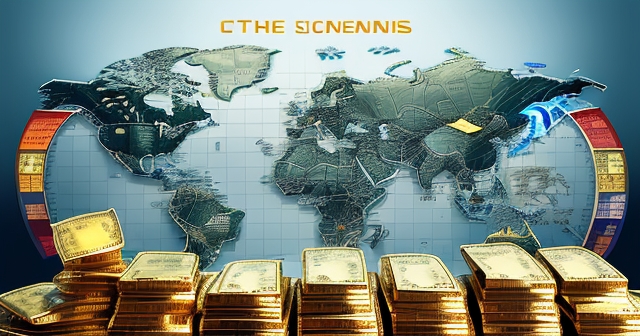
2. Cross-Border Payment Systems: The dominance of the dollar is heavily reliant on the infrastructure that moves dollars around the world, such as the SWIFT network. Countries are actively developing or expanding alternative payment systems:
- China’s CIPS (Cross-Border Interbank Payment System): While not a direct SWIFT replacement, CIPS facilitates cross-border Renminbi transactions, providing an alternative rail.
- Central Bank Digital Currencies (CBDCs): Many central banks are exploring or launching CBDCs. Critically, initiatives like Project mBridge (a collaboration involving central banks from China, Hong Kong, Thailand, and the UAE) aim to create multi-currency CBDC platforms for efficient international payments, potentially bypassing traditional correspondent banking networks that are often dollar-denominated and routed through the U.S. financial system.
- Bilateral Payment Agreements: Countries are establishing direct payment links or using local currency swap lines to facilitate trade without converting to USD.
3. Central Bank Reserves: This is a key indicator. While the U.S. dollar still constitutes the largest share of global central bank reserves, its percentage has seen a gradual decline over the past two decades, particularly among emerging market central banks. Data suggests that as central banks diversify away from the dollar, the Euro and Yen have not absorbed the entire shift. Instead, there’s a noticeable move into currencies of smaller economies like the Australian Dollar (AUD), Canadian Dollar (CAD), Swedish Krona (SEK), and South Korean Won (KRW), likely for liquidity and portfolio diversification reasons. The Renminbi’s share is also increasing, albeit from a low base and still facing hurdles related to China’s capital controls.
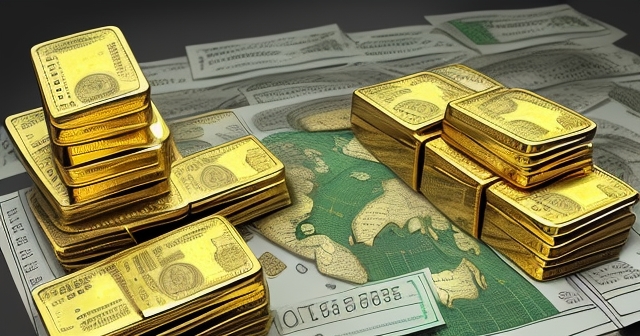
4. Gold Holdings: Central banks, especially in emerging markets, have been significant net buyers of gold in recent years. Gold is seen as a neutral reserve asset that is not subject to the jurisdiction or sanctions of any single country. Increasing gold holdings is a clear strategy by central banks to diversify their reserves away from fiat currencies, particularly the dollar-centric system.
These manifestations are not isolated incidents but part of a broader, albeit slow-moving, trend. They represent concrete steps taken by nations to build an economic infrastructure less reliant on the U.S. dollar.
Alternatives and the Role of Blocs: Is There a Successor?
If the world is diversifying away from the dollar, what are the alternatives being explored? No single currency or system is poised to replace the dollar’s comprehensive role anytime soon, but several contenders and concepts are gaining traction:
1. Other Major Currencies (Euro, Yen, Pound): These are established reserve currencies with liquid markets. However, none possess the same scale, depth, or global reach as the USD, nor do they represent economies or political blocs that universally appeal as a sole alternative across the diverse landscape of nations seeking to diversify.
2. The Renminbi (Yuan): China is actively promoting the internationalization of the Renminbi. Its share in global payments and central bank reserves is growing. China’s economic size and importance in global trade lend weight to the Renminbi’s potential. However, significant challenges remain, including China’s capital controls, which limit the free flow of money, and concerns about the transparency and rule of law within China’s financial system. These factors currently prevent the Renminbi from being a truly global, freely usable currency on par with the dollar.
3. Gold: As mentioned, gold is a favored alternative for central banks seeking a neutral, tangible store of value. Its appeal lies in its history as money and its independence from sovereign risk associated with any single government’s debt or policy.
4. A Potential BRICS Currency or System: The BRICS group (originally Brazil, Russia, India, China, South Africa, and now including additions like Saudi Arabia, UAE, Egypt, Ethiopia, Iran, and Argentina) has been vocal about reducing dollar reliance. While discussions about a unified BRICS currency are still in their nascent stages and face immense logistical and political hurdles, the bloc is actively promoting trade settlement in member countries’ local currencies. They are also exploring shared payment systems and expanding the role of institutions like the New Development Bank and the Contingent Reserve Arrangement as alternatives to Western-dominated financial bodies.
5. CBDCs and Multi-lateral Platforms: The development of interconnected CBDC platforms (like Project mBridge) could create entirely new pathways for international payments that bypass traditional currency conversion and correspondent banking, potentially diminishing the dollar’s role as the necessary intermediary.
It’s crucial to note that these alternatives often serve specific purposes – gold for reserves, Renminbi for trade with China, regional currencies for bilateral trade within blocs, and new systems for payment efficiency. None yet replicate the dollar’s multifaceted utility across reserves, trade invoicing, capital markets, and daily transactions globally.
If you are interested in exploring trading opportunities presented by shifts in currency dynamics or the performance of various financial assets, you might consider a platform that offers a wide range of instruments. If you’re looking for a platform to start forex trading or explore various CFD products, then Moneta Markets is worth considering. Hailing from Australia, it offers over 1000 financial instruments, catering to both beginners and professional traders.
Potential Impacts: What De-dollarization Could Mean
A significant, albeit gradual, shift away from the U.S. dollar could have profound implications, both for the United States and the global economy:
Impacts on the United States:
- Dollar Depreciation: Reduced demand for the dollar in trade and reserves could lead to a broad depreciation of the currency relative to others.
- Underperformance of US Financial Assets: If global investors hold fewer dollar-denominated assets as reserves or for trade, demand for U.S. government debt (Treasuries) and other U.S. financial assets could decrease, potentially leading to higher borrowing costs for the U.S. government and corporations.
- Upward Pressure on Real Yields: Reduced foreign demand for Treasuries might require the U.S. to offer higher interest rates to finance its debt, potentially pushing up real yields across the economy.
- Inflationary Pressure: A weaker dollar can make imports more expensive, contributing to domestic inflation.
- Loss of Influence: The ability of the U.S. to impose sanctions and influence global financial flows is intrinsically linked to the dollar’s dominance. A reduction in its use would diminish this power.
- Uncertainty for Growth: The effect on U.S. growth is complex. A weaker dollar could make U.S. exports more competitive but might also deter foreign investment if the U.S. financial markets become less central.
Impacts on the Global Economy:
- Shift in Global Balance of Power: Economic influence often follows currency dominance. A multi-polar currency system could reflect and reinforce a more multi-polar geopolitical world.
- Increased Volatility in FX Markets: As trade and capital flows diversify across more currencies, exchange rate volatility among those currencies might increase.
- Potential for Regional Blocs: De-dollarization could accelerate the formation of stronger regional economic and financial blocs centered around alternative currencies or payment systems.
- Challenges to Liquidity: For now, the dollar offers unmatched liquidity. Shifting to multiple currencies or less established systems could introduce friction and potentially reduce overall global financial liquidity, at least during the transition.
- Reshaping of Markets: Markets for commodities, bonds, and other assets might increasingly be priced and settled in non-USD currencies, changing trading patterns and benchmarks.
These are potential outcomes of a significant de-dollarization trend. The actual impact will depend on the speed and extent of the shift, and how well alternative systems can replicate the liquidity, trust, and stability the dollar system currently provides.
Assessing the Current Status and Outlook: Slow Burn or Imminent Threat?
Given the drivers and manifestations, how far along is de-dollarization? Most experts agree it’s a process underway, but it’s a slow burn rather than an imminent threat to the dollar’s overall dominance.
While the dollar’s share of global reserves has declined from its peak, it still constitutes the vast majority – far more than the combined share of the next few currencies. U.S. capital markets remain the deepest and most liquid in the world. The rule of law and institutional framework in the U.S., while facing challenges, are still widely trusted by international investors relative to many alternatives.
The transition costs of moving away from the dollar are immense for global businesses and financial institutions. The network effects of the dollar system – everyone uses it, so you use it too – are incredibly powerful and difficult to overcome.
Therefore, while central banks are diversifying, and alternative payment systems are being built, replacing the dollar’s central role as the unit of account, medium of exchange, and store of value for the *entire* global economy is a monumental task that will likely take decades, if it ever fully happens. The narrative around de-dollarization is perhaps moving faster than the actual financial flows. However, dismissing the trend entirely would be unwise; the direction of travel, however slow, is evident.
Understanding these macro trends is vital for any serious trader or investor. Whether you focus on forex, commodities, or equities, shifts in global currency dynamics can present both risks and opportunities. Staying informed is your first step towards navigating these complexities effectively. If you are looking for a global broker with solid regulatory backing and a wide range of trading options, consider platforms with robust offerings. For instance, if you are seeking a brokerage with regulatory assurance and global trading capabilities, Moneta Markets holds multi-country regulatory certifications including FSCA, ASIC, and FSA. It offers segregated client funds, free VPS, and 24/7 Chinese customer support, making it a preferred choice for many traders.
Political Dimensions: Tariffs, Blocs, and Financial Weaponization
De-dollarization is not solely an economic or financial phenomenon; it is deeply intertwined with global politics. Nations perceive the dollar’s dominance through a political lens, particularly concerning the power it affords the United States.
The use of sanctions, for instance, is a direct application of financial power derived from the dollar system. While effective in isolating targeted regimes, it also incentivizes others to find ways around that power. Countries are acutely aware that their holdings of dollar assets or their reliance on dollar-based payment systems can be used against them.
Political blocs like BRICS are explicitly using the de-dollarization narrative as a unifying theme, framing it as a move towards a more equitable and multi-polar world order, challenging the perceived hegemony of the U.S. and its allies. Promoting trade in local currencies or exploring alternative financial institutions serves not only economic goals but also strategic political objectives.
Moreover, political rhetoric in the U.S. can also play a role. Statements from figures like former President Donald Trump, who has reportedly threatened tariffs against countries actively working to undermine the dollar’s status, underscore the high political stakes involved. Such threats, while intended to protect dollar primacy, can ironically reinforce the perception among other nations that the dollar system is a tool of U.S. foreign policy, further fueling the desire to diversify.
The political dimension adds another layer of complexity and uncertainty to the de-dollarization trend. It transforms a discussion about currency and finance into one about power, sovereignty, and the future architecture of global governance.
Navigating the Future: What Investors and Traders Should Consider
So, what does this mean for you as an investor or trader? De-dollarization isn’t a trade signal in itself, but it’s a crucial macro trend that informs potential long-term shifts in markets. Here are a few considerations:
- Currency Exposure: Understand your portfolio’s exposure to the U.S. dollar and other major currencies. Are there diversification opportunities or risks related to potential currency value shifts?
- Commodity Markets: Pay attention to how commodity transactions, particularly in energy and metals, are being settled. Increased non-USD settlement could impact currency dynamics relevant to these markets.
- Emerging Markets: Many of the drivers and manifestations of de-dollarization are centered in emerging economies. Understanding the financial stability and currency policies of these nations becomes increasingly important.
- Gold as a Diversifier: Given the trend of central banks increasing gold holdings, consider the role of gold as a potential diversifier in your own portfolio, understanding its unique characteristics as an asset.
- Staying Informed: The landscape is constantly evolving. Keep abreast of developments in international payment systems, central bank policies regarding reserves, and geopolitical events that could accelerate or slow the trend.
Remember, the dollar’s strengths are still formidable. Its deep capital markets, robust institutions (despite political noise), and the sheer inertia of the global financial system provide powerful support. However, the direction of travel is clear: diversification away from the dollar is a strategic priority for many nations. While a dramatic collapse of the dollar’s status seems unlikely in the near term, a gradual evolution towards a more multi-polar currency world is a distinct possibility over the coming years and decades.
Conclusion: A Long Road Ahead for De-dollarization
In conclusion, de-dollarization is a complex and long-term trend characterized by efforts from various nations to reduce their reliance on the U.S. dollar for trade, finance, and reserves. Driven by geopolitical tensions, economic aspirations, and concerns over financial weaponization, this movement is manifesting in shifts in commodity settlements, the development of alternative payment systems, and changes in central bank reserve allocation.
While the rise of alternatives like the Renminbi, the increased adoption of gold, and the initiatives from blocs like BRICS signal a clear desire for change, they face significant hurdles in replicating the liquidity, trust, and universal acceptance currently enjoyed by the U.S. dollar. The structural underpinnings of dollar dominance – including the depth of U.S. capital markets, the stability of its institutions, and powerful network effects – remain firmly in place, suggesting that any significant shift will likely unfold over decades rather than years.
For investors and traders, understanding de-dollarization is key to navigating the evolving global financial landscape. It’s a trend that influences currency valuations, capital flows, and market dynamics. By staying informed and considering its potential implications, you can better position yourself to navigate the opportunities and risks in a world where the dominance of the mighty greenback is being increasingly, albeit gradually, challenged.
de-dollarization definitionFAQ
Q:What is de-dollarization?
A:De-dollarization refers to the process of reducing the reliance on the U.S. dollar in international trade, reserves, and financial transactions.
Q:What are some reasons countries are de-dollarizing?
A:Countries are driven by geopolitical tensions, the impact of U.S. sanctions, the desire for economic sovereignty, and concerns over U.S. economic stability.
Q:What are the potential consequences of de-dollarization?
A:Potential consequences include increased volatility in FX markets, shifts in global power dynamics, and changes in how commodities and assets are traded.
